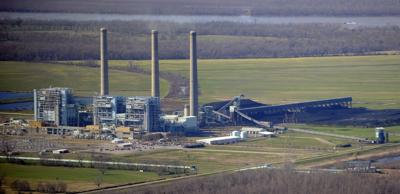New federal rules that will require coal-fired power plants to reduce emissions could be good for Louisiana, not only as it looks to mitigate the effects of climate change but also as it stands on the forefront of energy investment in the future.
The rules, announced by the Environmental Protection Agency on Thursday, would require coal-burning plants to reduce emissions by 90% by 2039, one year earlier than previously proposed. The goal is to reduce carbon emissions that have fueled climate change.
The rules are part of an effort by the Biden administration to hasten the transition away from coal and toward cleaner forms of energy generation, including wind, solar and natural gas.
Because the rules also require plants to reduce emissions of toxic metals and other pollutants, federal officials estimate they will have climate and health benefits totaling $370 billion over the next 20 years.
Louisiana energy companies are studying the effects of the new rules. The state's remaining coal-burning plants are: an Entergy Louisiana plant in Lake Charles; a joint Entergy-Cleco plant in New Roads; and the Brame Energy Center in Lena, which is owned by Cleco, Louisiana Energy and Power Authority and the Lafayette Utilities System.
Entergy Louisiana noted that coal-generated power was only 8% of the company's current capacity, and that in 2020, the company had already announced plans to retire its coal-powered plants by 2030.
It's clear, though, that moving on from, coal could further position Louisiana as a leader in clean energy production.
The Gulf Coast is poised to be at the forefront of a major expansion in wind energy projects: Last week, U.S. Interior Secretary Deb Haaland, speaking in New Orleans to an energy conference, announced a slate of new wind lease sales, including three in the Gulf of Mexico.
Solar has also gained a foothold in Louisiana. Though there has been intense local opposition in some areas to new solar farms, the state ranks highly in terms of expected solar growth.
In addition, carbon capture and sequestration is an emerging technology that could be used by some power plants to control emissions going forward. And this year, the state was granted primacy for permitting such projects, positioning it to become a national leader in the practice.
We believe these rules balance the concerns of industry with the very urgent need to address climate change. The rules allow for coal-fired electricity generation to be used in emergencies and do not overly burden existing plants that rely on natural gas for power generation. Meanwhile, they encourage the growth of renewable sources and challenge the energy industry to develop new technologies. There is reason to believe that if Louisiana embraces this strategy, it can continue to be an energy leader into the future.

